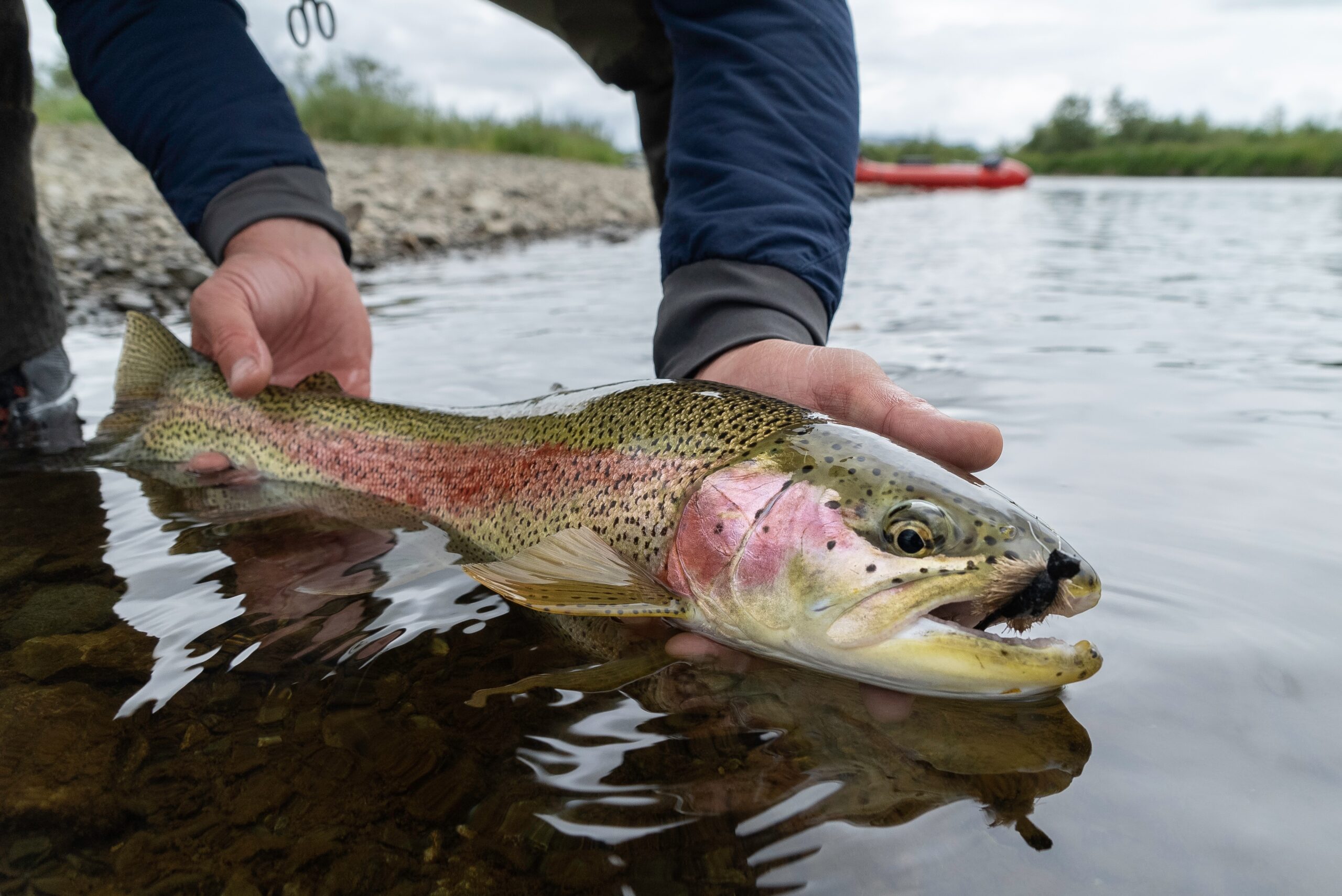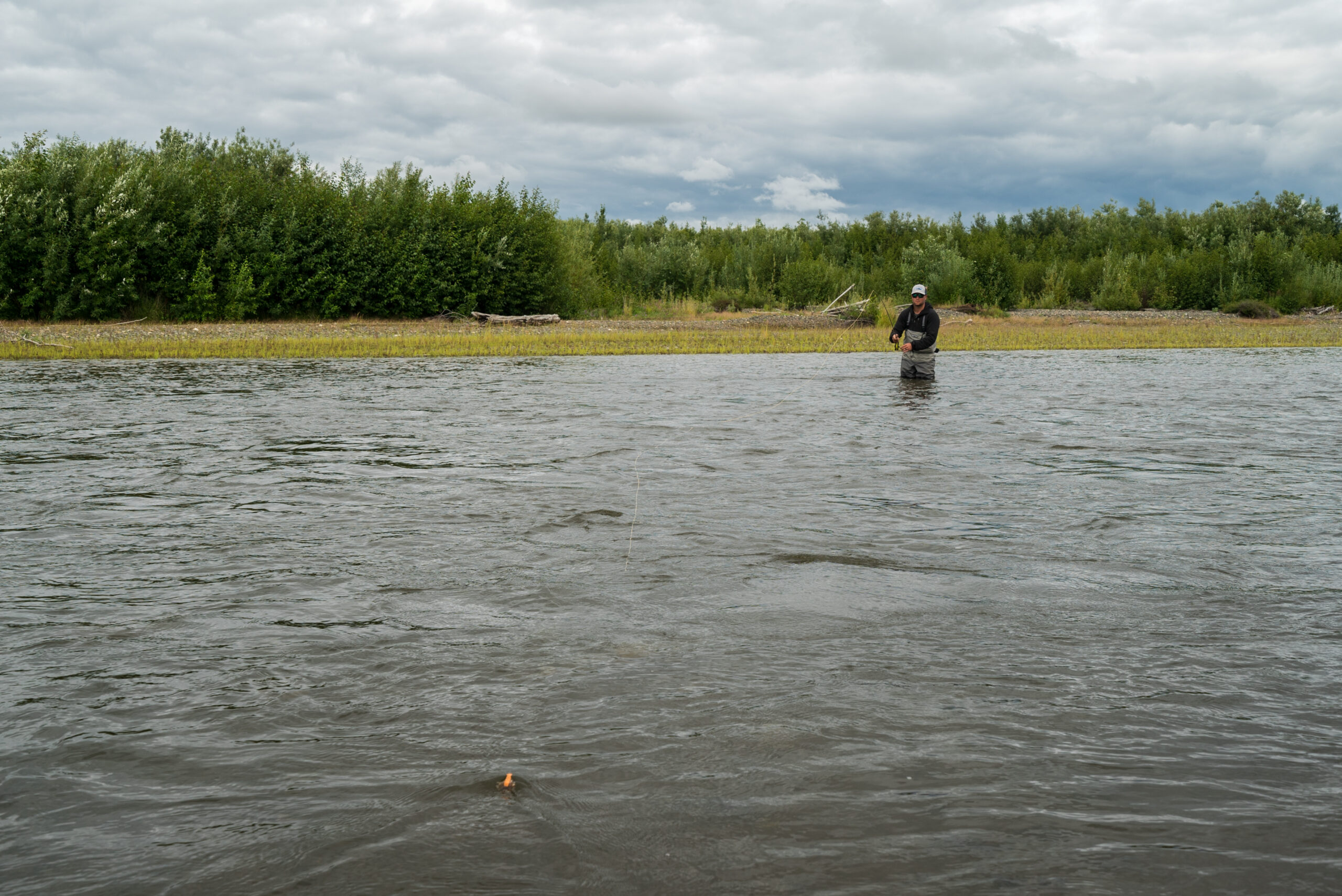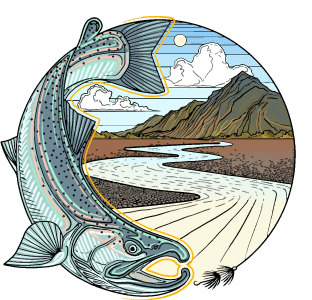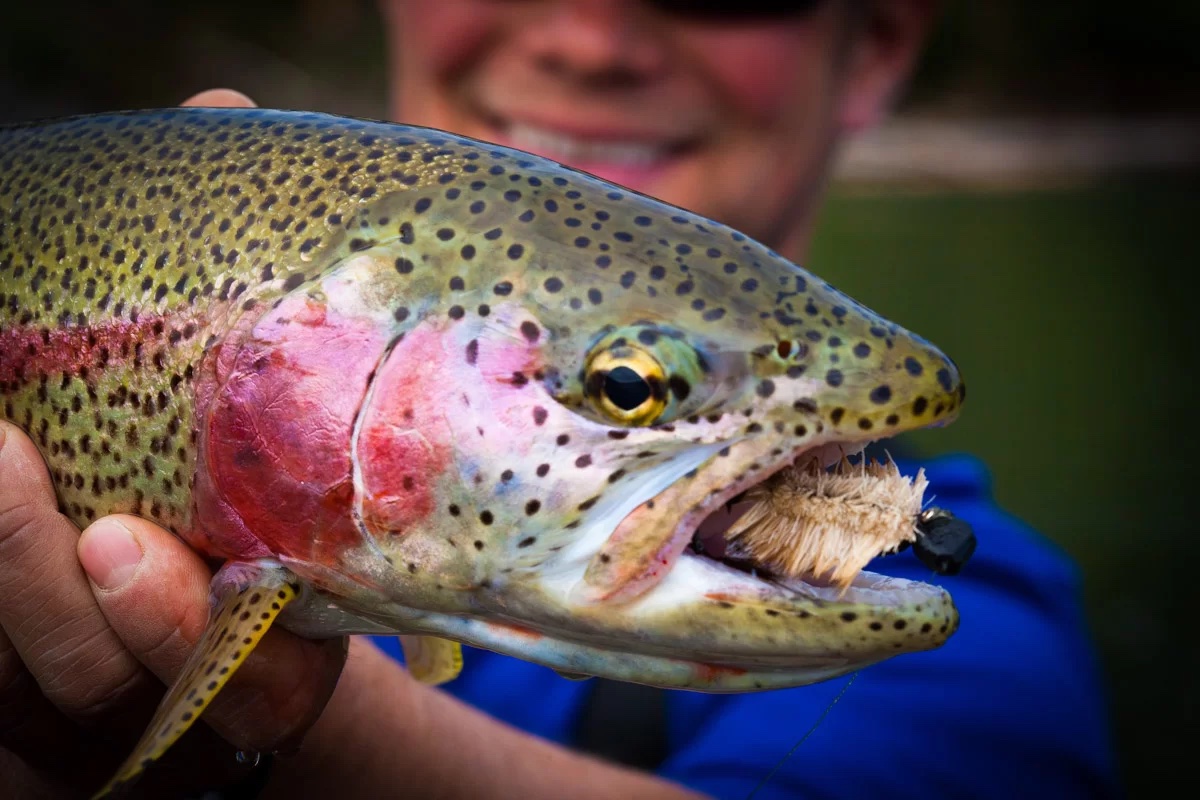
Words and photos by Cory Luoma of Fly Out Travel
Edited by Kyle Kolodziejski
6 Tips: Mousing for Rainbow Trout in Alaska
As the days get longer and the rainbow trout here in Alaska finish their spawning cycle toward the middle and latter part of June we enter into an exciting period for many die-hard Alaska trout bums, Mousing season! With short summers and long winters, Alaskan rainbow trout are ravenous opportunists knowing they have a fairly short window to fill their feed bags to grow and sustain themselves throughout the year. Generally speaking, in most river systems throughout Alaska, rainbow trout tend to overlook the small bug hatches and prioritize their energy output to feed on large protein-rich meals such as smaller fish, sculpin, fry, salmon flesh, salmon eggs, and, yes, small rodents (i.e., mice and voles). In June and early July, trout are hungry coming out of the long winter and expending lots of energy to spawn in the springtime. Trout food sources are somewhat limited during this time as it's still well before the first salmon start to spawn and the endless flesh and egg buffet opens shop. During this time rainbow trout are on the hunt and willing to feed on a large variety of food and this is the perfect window to start mousing in Alaska waters. If you are already keen to this addicting technique, or trying it out for the first time, we put together some tips to help out your mousing game.
1. Selecting the Proper Hook Size. Several out-of-the-bin mouse patterns have very large size 2 or 4 gap hooks with Northern Pike, or larger game fish in mind. For trout, a hook that large in size can be harmful to the fish, not to mention a lot of missed takes when fish strike the fly. In many cases, Alaskan rainbow trout are actually eating voles, not mice. Voles are typically smaller in size than mice so using a smaller "mouse" pattern with a size 6-8 stinger hook can often lead to more takes and hook-ups.
2. Use Strong Leader & Tippet. Alaska rainbows are not typically leader shy, especially when it comes to skating mice across the surface. In this case, fish are attracted to the moment and surface disruption created by the fly so there's no need to use light tippet for a delicate presentation. Secondly, when mousing for trout you're often fishing around structure (log jams, root wads, and downed trees) where fish are lurking, waiting for a furry meal. Once you hook a fish around structure there's good chance you'll need to apply a lot of pressure on the fish right away to prevent it from hanging up your line in the "wood". There's no reason to use expensive tapered leaders in this game, the easiest (and cheapest) leader option is a 5-7 feet section of 16-20 lb monofilament to get the job done.

3. Plop, Wake & Wiggle. When mousing for Alaskan rainbow trout the most important thing to do is create surface disturbance. As we like to say "plop, wake, and wiggle." Rainbow trout that regularly eat mice are keyed in on the sound and sight of these furry critters falling into the water and swimming across the surface. Big Alaska rainbows will often times smash a mouse as soon as it hits the water. The aesthetics, color and life-like look of a mouse pattern are far less important than the action that the fly makes on the surface of the water. The best flies for mousing are ones that cast well, float well, push a lot of water, and skate right-side-up without fouling. There is no need for fancy eyes or carefully placed "Mickey Mouse" ears on with mouse imitations!
4. Target Fish in Shallow Water. This is a pretty easy concept for even a novice angler. Fish that are closer to the surface are much more likely to eat a surface fly. Yes, at times our rainbow trout come out of the deepest darkest holes to crush a mouse pattern but you'll get more action by keying in on shallower water areas. Let's face it, a rainbow that is 8 feet down under a log jam enjoying a salmon flesh buffet is less likely to have interest in expending the energy to eat a surface fly. Not to mention, sight fishing to shallow water mouse eaters is one of the most exciting ways to target Alaska rainbow trout!

5. Set the Hook, the Right Way. This can be a tough one for many trout anglers. Rainbow trout eat mice in several different ways, sometimes they explode on the pattern creating a big splash or boil and in other cases they sip the fly slowly like it’s a green drake on a spring creek. With an explosive eat, it's common for anglers to have an immediate jerk reaction and set the hook too early, ultimately pulling the fly out of the fish’s mouth. On the other hand, when a trout eats slowly, the anticipation creates the same folly with setting the hook too early, and consequently missing the fish. The key is to continue stripping, twitching, or skating the fly until the fly disappears under the water and your line is tight. To help increase your hook-ups keep your rod tip low to the water keeping little to no slack in the line as you wake and wiggle the fly. When a fish takes the fly its best to employ a downstream "side set" or classic strip set to maximize your chances at hooking the fish properly.
6. Don’t Give Up. If you missed a fish because of a bad angle or early hook set don't give up. When Alaskan trout are on the eat chasing prey on the surface they are in a very aggressive mind set and often times come back to missed a fly right away, or shortly after you missed it the first time around. Don't be afraid to put that fly right back in there, or even better, wait a few minutes, adjust your angle, then try again. Rainbow trout in Alaska are voracious, meat eating opportunists and depending on the river and situation, these fish can get pricked 2 or 3 times and still want to eat.
AFFG Staff's Top Flies for Mousing in Alaska
Top Destinations for Mousing for Rainbow Trout in Alaska
Below is a list of some of Alaska's great lodges that are perfectly positioned to skate mouse patterns for wild Alaskan rainbow trout. If you would like more details about planning a trip to Alaska fly fishing destinations contact our partners at Fly Out Travel.









Any suggestions on places to mouse for trout close to Anchorage and on the road system?
Hi,
There can be some good mousing out along the Parks Highway. Mousing is usually best in the late spring and fall before freeze up. Check out some of the smaller creeks like Sheep Creek and Goose Creek. You want small, brushy streams with lots of structure and hiding spots. Good Luck!!!